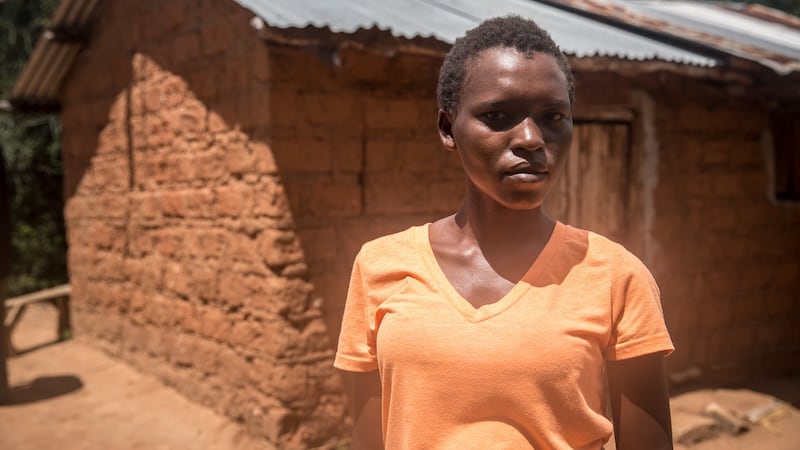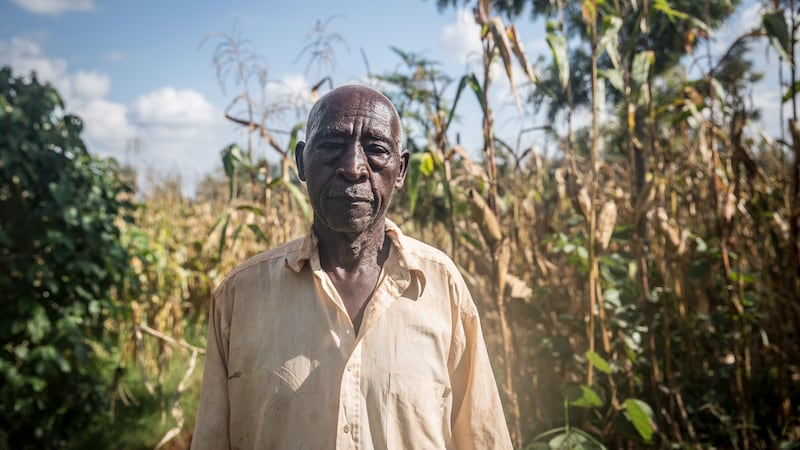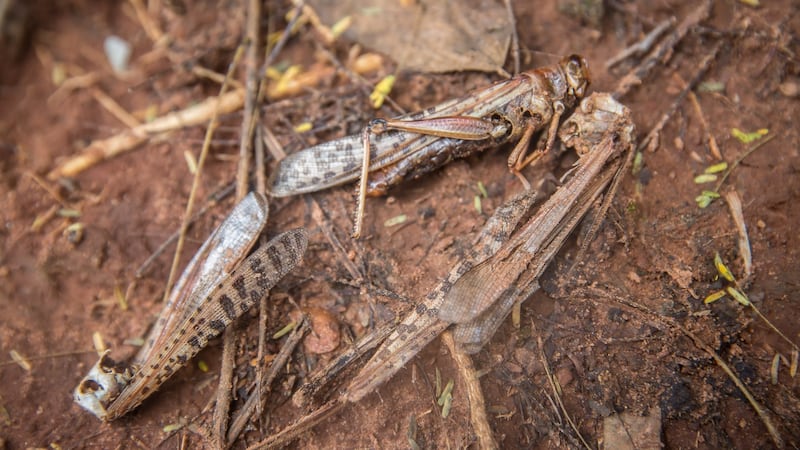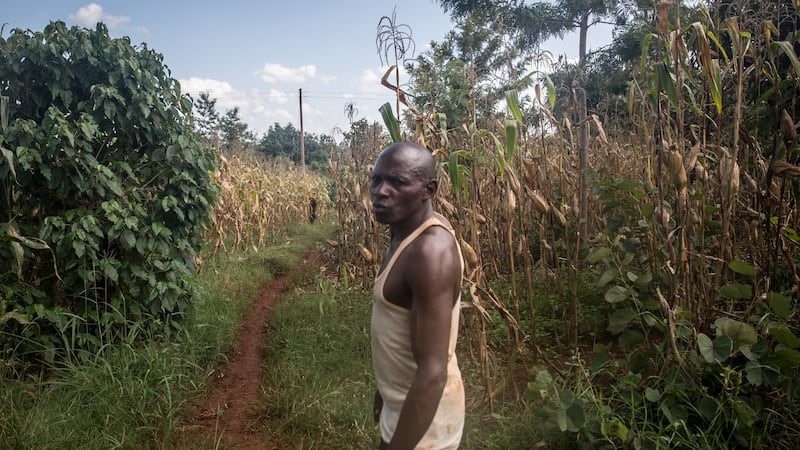Karimi Phides was inside her home when the first swarm of locusts came two weeks ago. The 25-year-old heard a buzzing and ran to the door. “They made a noise like bees. It was like a cloud, we were so excited and very scared,” she recalls, pointing out the bodies of some dead insects still littering the ground.
"They almost covered the visibility of the sky,"says Brenda Mwatha (20), another farmer who lives near Phides in Embu County, Kenya.
The desert locusts – or nzige, in Swahili – stayed for two days, eating the millet Phides and her three children depend on for survival.

“We were banging the iron sheets on the ceiling to try and scare them away,” she said. “We were so worried when we saw them eating our only source of livelihood.”
In the end, the damage was minimal, not nearly as bad as the drought they experienced last year, or the rain last month that prevented them from harvesting maize on their four-acre plot.
As she tells her story, Phides is animated. This is just another unusual event related to increasingly unstable weather, she says. Though authorities came to spread pesticide a day after the infestation began, it was heavy rain – almost unheard of at this time of year – that eventually made the locusts move on.
Phides's village, about 175km northeast of the Kenyan capital Nairobi, is one of many parts of east Africa that have experienced dense swarms of desert locusts over the past few months. Billions of the insects are moving across the region at a speed of up to 150km a day, flying across countries including Ethiopia, Eritrea, Sudan and Uganda.

In January, a locust swarm forced an Ethiopian Airlines passenger plane off route. On February 2nd, Somalia declared the locusts a national emergency, its government describing them as "a major threat to Somalia's fragile food security situation".
Devouring crops
The locusts are soon expected to arrive in South Sudan, a country with an ongoing humanitarian crisis, already decimated by war. Each locust can eat its own weight in food daily, according to the UN, meaning they pose a significant threat to crops and livelihoods.
Uganda's national consultant for climate change at the UN Food and Agriculture Organisation, Emmanuel Zziwa, tells The Irish Times the country is on high alert. The current locust swarms are climate change-related, with unusual weather providing "suitable breeding conditions for the pest, helping it to build huge numbers", he says.
The UN FAO says the locusts currently in east Africa originated in Oman and carried on through Yemen, before crossing the Red Sea. The number of locusts could soar to five hundred times the current amount by June, the FAO warns.
In Kamuiru, Muranga county, 82-year-old Stephen Kibewaweru recalls the last big locust outbreak in Kenya – 70 years ago. “I was a child,” he says, standing on his family’s three-acre plot of land. “We ran away. The destruction was so severe.”

This time, when his land was invaded, government authorities responded 30 minutes after he called them. They sprayed pesticide that caused the locusts to flee, leaving just a small amount of damage behind them.
“It is the nature of God,” Kibewaweru says calmly, while his neighbour, Samson Kamwaro (40), says he would like the government to focus more on prevention.
Biblical fears
Swarms of locusts are mentioned in the Bible as one of the 10 plagues of Egypt, leading some religious figures in Kenya to focus on the latest locust swarms in their preaching.
On January 27th, Sozo Church of God, a pentecostal church in Nairobi, posted on Facebook: "REPENT! REPENT! REPENT. These locusts are not sent by Satan but by God Himself . . . Let those who have ears hear what the Spirit of God is saying in this end time."
“God is punishing Kenya. We are doing evil things. I think God is punishing us,” says Esther Njoki, a 40-year-old farmer who lives in Kambirwa and believes the coronavirus is another sign it is time for a global reckoning.
“One man who was bad to the community had his crops eaten by locusts. I think they are being selective,” she says. “God had a purpose. God is trying to talk to us.”
But most Kenyans who speak to The Irish Times about the locust plague say climate change is the source of their worries: most recently the unusually cold January has led to goats getting sick and crops not growing fast enough. This adds to a general feeling of unease about their futures, they say.
“There was a lot of drought last year and it killed so many animals,” says Phides. “We didn’t get help from the government or anyone. It was hard to recover but we’ve managed.”













